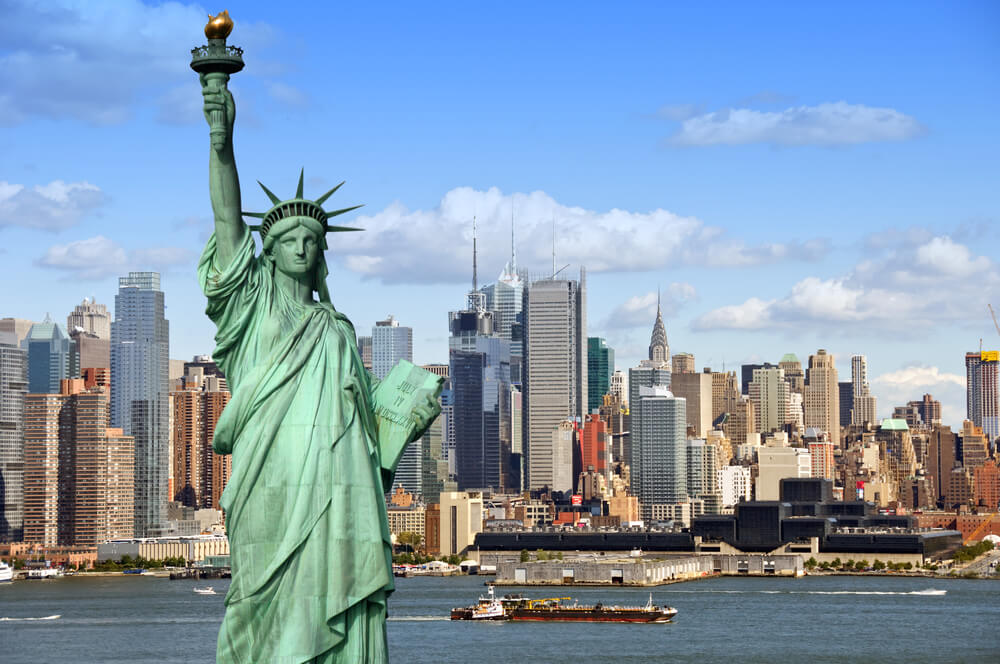How America is getting poorer: how much money you have to do in big cities
In the US, there is a tendency of geographical separation of rich and poor Americans.

Фото: Depositphotos
This is evidenced by data from the research BuildZoom.com, writes Daily Mail.
Rich Americans are moving to the ocean coast, and poorer families are moving to the “Rusty Belt”.
The rusty belt, also known as the Industrial or Factory belt, is part of The Midwest and east coast USAwhere from the beginning industrial revolution and before 1970's, steel production and other American industries were concentrated heavy industry. Geographically, this belt usually includes the central part of the state. New Yorkregions to the west of it in the states Pennsylvania, Ohio, Indiana, Michigan и Illinois to the west bank Lake Michigan.
This phenomenon is called “income sorting”, which means that people who move to more expensive metropolitan areas, such as New York and Los Angeles, are becoming richer, and those who move to small cities in the center of the country earn far fewer people leaving these cities, which leads to a deepening economic division in the country.
“What we see is a population that is divided into haves and have-nots. The haves are increasingly concentrated in expensive coastal cities,” explained study author Issy Romem.
San Francisco is an example of this trend—people who moved to the city from 2005 to 2016 earn an average of $12 more per year than those who move out of the city.
For example, those who move to cities such as Detroit and Cleveland have an average salary of 4200 dollars less than those who leave these cities.
The problem is exacerbated by high housing costs in coastal cities, where housing demand is high and supply is low, which leads to a constant increase in prices for the purchase and rental of housing.
As a result, people with lower incomes are deprived of the opportunity to move to these cities, which further aggravates the problem of “sorting by income” and creates an endless cycle of price increases. Ultimately, these cities may become inaccessible to all but the richest Americans.
People who move to these expensive metropolitan areas also usually have more working people in their families, which enables them to pay for expenses in these expensive cities. In most cases, they have a better education and, accordingly, higher incomes, and educated youth move to large cities. Meanwhile, those who leave these cities, as a rule, have one working person in the family.
For example, people moving to Sacramento tend to have fewer family members than those who leave the city. Romem suggested that this is probably because Sacramento is a key destination for those fleeing high costs in San Francisco.
On the other hand, people who are forced to move inland often represent single-member families, and their income is no longer enough to cover expenses in expensive cities.
This leads to a potential brain drain from parts of Central America, which makes it difficult for these regions to develop economic sectors based on knowledge and technology, which would help create new jobs that could keep more educated people from moving.
For example, Pittsburgh is home to several universities, but students tend to leave this region after graduation, realizing that their potential will bring them more opportunities in cities along the coasts.
Meanwhile, in richer areas of the country, a shortage of unskilled labor may soon appear, since people with low incomes can no longer cover expenses in expensive metropolitan areas.
Another recent study confirms income inequality data. It argues that employees who occupy management positions in the US in 2017 earn 317 times more than middle-income employees.
Average executive pay rose 17,6 percent to $18,9 million last year—more than 58 times the 0,3 percent increase in pay received by the average employee.
This is significantly higher than the ratio of 20 to 1 in 1965, or 58 and 1 in 1989, and signals that the problem of income inequality in Americans is growing.
Read also on ForumDaily:
How to retire in the US in 33, with three young children and $ 1,3 million savings
Three types of people who can become millionaires
How long does it take to buy a house in different US cities?
How to make money without working
Subscribe to ForumDaily on Google NewsDo you want more important and interesting news about life in the USA and immigration to America? — support us donate! Also subscribe to our page Facebook. Select the “Priority in display” option and read us first. Also, don't forget to subscribe to our РєР ° РЅР ° Р »РІ Telegram and Instagram- there is a lot of interesting things there. And join thousands of readers ForumDaily New York — there you will find a lot of interesting and positive information about life in the metropolis.











